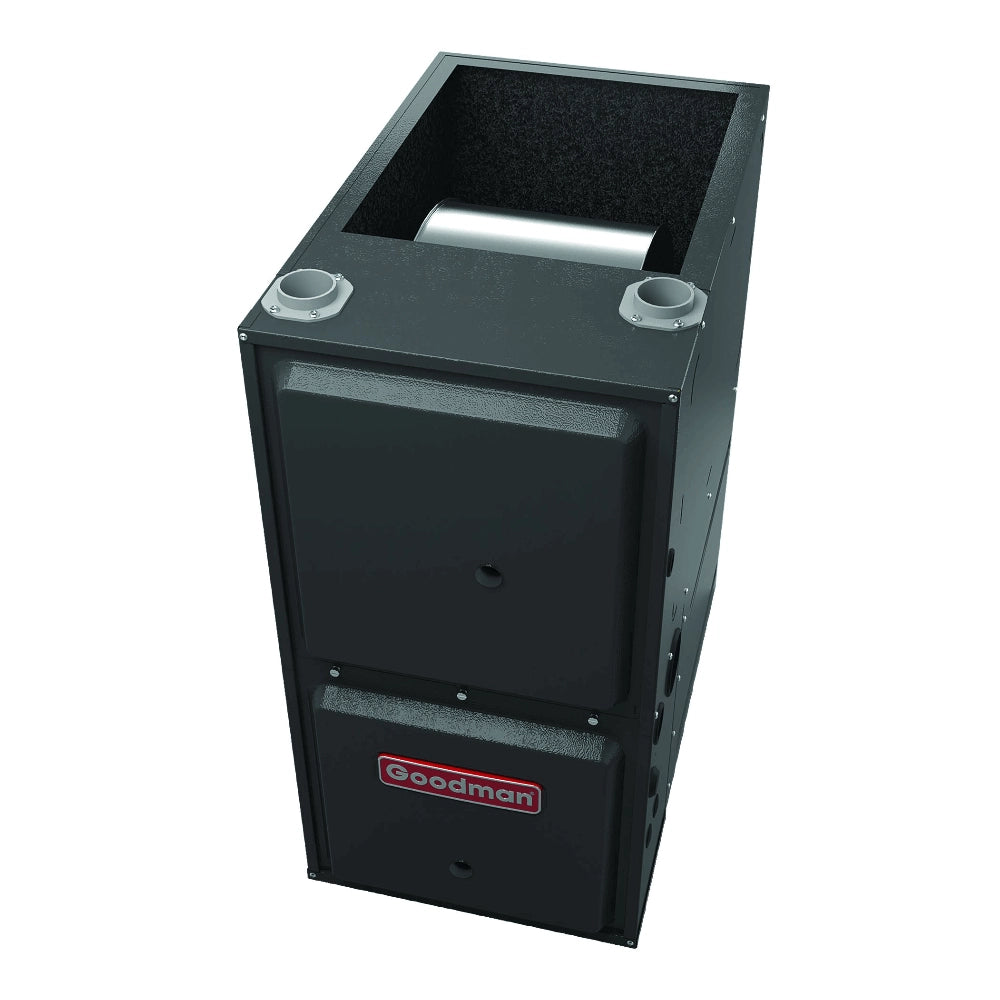Best 60,000 BTU Gas Furnaces
6 products
Showing 1 - 6 of 6 products
A 60,000 BTU gas furnace is a highly effective heating solution for small to medium-sized homes, offering reliable warmth and energy efficiency. The BTU (British Thermal Unit) rating measures the amount of heat a furnace can provide per hour, and a furnace with a 60,000 BTU rating is capable of delivering sufficient heat for spaces typically ranging from 1,200 to 1,800 square feet, depending on the climate, insulation quality, and overall home construction.
How 60,000 BTU Gas Furnaces Work
Gas furnaces operate by burning natural gas or propane to generate heat. In a 60,000 BTU furnace, natural gas is ignited in the burner, producing heat that passes through a heat exchanger. The blower motor then distributes this heated air throughout the home via the ductwork, keeping the interior at a comfortable temperature. The furnace’s BTU capacity determines the amount of heat it can deliver, with 60,000 BTUs being an optimal balance for homes of moderate size.
Efficiency Ratings: AFUE
One of the most critical factors when evaluating a 60,000 BTU gas furnace is its AFUE (Annual Fuel Utilization Efficiency) rating. This rating indicates how much of the fuel is used to generate heat versus how much is lost in the venting process. For example, a furnace with an 80% AFUE rating will convert 80% of the fuel into heat, while the remaining 20% is lost through exhaust gases.
For homeowners looking to reduce energy consumption, a 96% AFUE furnace may be more appealing. These furnaces use 96% of the fuel for heating, which can lead to significant savings on energy bills over time. While high-efficiency models tend to have higher upfront costs, the long-term savings on utility bills often make them a wise investment for eco-conscious homeowners or those living in colder climates where the furnace runs more frequently.
Types of 60,000 BTU Gas Furnaces
Single-Stage Furnaces: A common feature in 60,000 BTU furnaces is the single-stage operation, where the furnace operates at full capacity whenever it is on. This type of furnace provides quick, reliable heating but may cause slight temperature fluctuations as it cycles on and off.
.
Modulating Furnaces: A more advanced option is the modulating furnace, which continuously adjusts its heating output to match the home’s current needs. Modulating furnaces offer the highest level of comfort and energy efficiency, but they also come at a higher price point.
Installation Options
A 60,000 BTU gas furnace typically offers flexible installation options, making it suitable for various home configurations. Furnaces can be installed in upflow, downflow, or horizontal configurations:
- Upflow installation: The furnace is placed in a basement or utility room, and heated air is distributed upwards into the ductwork.
- Downflow installation: Ideal for attics or elevated spaces, where the air is pushed downward through the ducts.
- Horizontal installation: Used in tighter spaces, such as crawl spaces or attics with low clearance, where the furnace is installed on its side.
Advanced Features
Modern 60,000 BTU gas furnaces often come equipped with advanced features that improve energy efficiency and comfort:
- ECM Blower Motor: Many modern furnaces feature an ECM (Electronically Commutated Motor), which is more efficient and quieter than traditional motors. It allows for variable-speed operation, providing better airflow control and reducing energy consumption.
- Smart Thermostat Compatibility: Many furnaces are compatible with smart thermostats, enabling homeowners to control their heating system remotely via smartphone apps. This allows for scheduling, energy tracking, and greater control over heating costs.
Conclusion
A 60,000 BTU gas furnace is a reliable and efficient solution for heating small to medium-sized homes. With varying levels of efficiency, including options with 80% AFUE and 96% AFUE, homeowners can choose the model that best fits their needs and budget. Whether it’s a single-stage, two-stage, or modulating furnace, a 60,000 BTU unit provides consistent, reliable warmth, ensuring that homeowners stay comfortable while managing their energy costs effectively.












